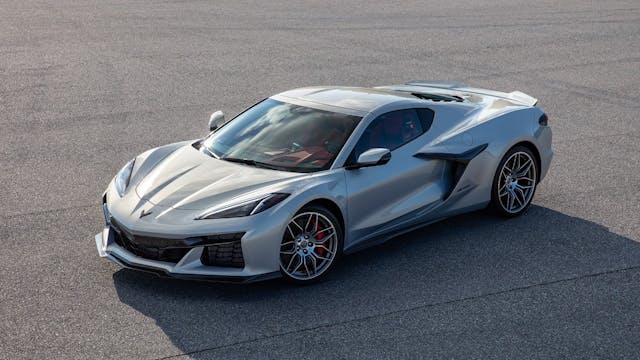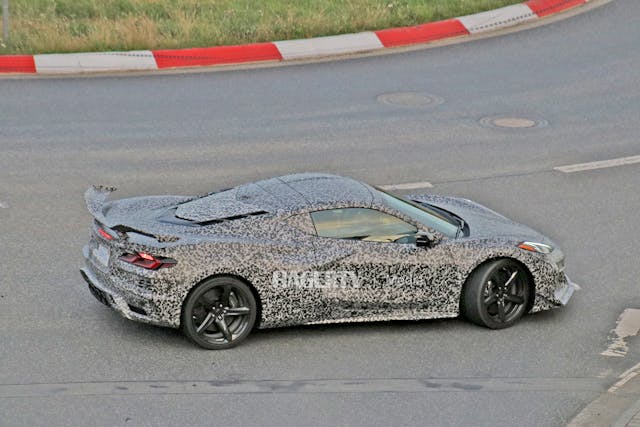Did Chevy just reveal the Corvette Z06’s redline?
The veiled trickle of Z06 teasers continues. Chevrolet just published a preview for an upcoming 30-minute feature film set to accompany the debut of the 2023 Corvette Z06 next Tuesday, October 26, at 12 p.m. ET. The shadowy 30-second clip features flat-plane V-8 noises aplenty (just like the teaser released earlier this year confirming that engine design), and made note that NBA superstar Devin Booker—an avid car enthusiast himself—will play a part in the much-awaited C8 Z06’s grand entrance.
What most caught our eye, however, was the measurement of time Chevy used to denote how far ahead of the reveal this clip arrived: 8600 minutes. A rather specific number, no doubt. Did Chevy just reveal the flat-plane V-8’s redline? It’s a distinct possibility; flat-plane V-8s tend to be higher-revving than their cross-plane counterparts, such as the marvelous 6.2-liter LT2 found in existing C8s (redlining at 6600 rpm). What’s more, if it does indeed sport an 8600-rpm redline, that will make it the highest-revving American performance car ever, besting Ford’s 5.2-liter Voodoo V-8 and its 8250-rpm limiter. And that’s just one of a handful of records this screamer might topple.

Of course, the reveal of the actual car is somewhat moot, considering we saw a camo-free Z06 (above) late last month. We know that the Z06 will boast wider hips than the standard C8, likely in an effort to swallow more tire front and rear. The tires, of course, will bear the brunt of the fury from a heavily motorsport-derived engine that’s likely to push north of 600 horsepower from 5.5 liters of displacement. Expect sticky rubber to be standard, with even grippier track tires offered as an option. There’s also a host of aero changes as well to help keep the whole business stable at eye-watering speeds, which we know are being achieved in camo’ed test mules that have been spied at the Nürburgring Nordschleife, the de facto proving ground for performance cars the world over. Carbon-ceramic brakes are also a likely to be an upgrade over the current iron rotors, in order to stand up to the abuse and extreme temperatures generated by repeatedly shedding massive pace on track.
Thankfully, we don’t have long to wait to see if our speculations are correct—roughly 8420 minutes, if our math is correct at the time of this writing. We’ll see you Tuesday.



